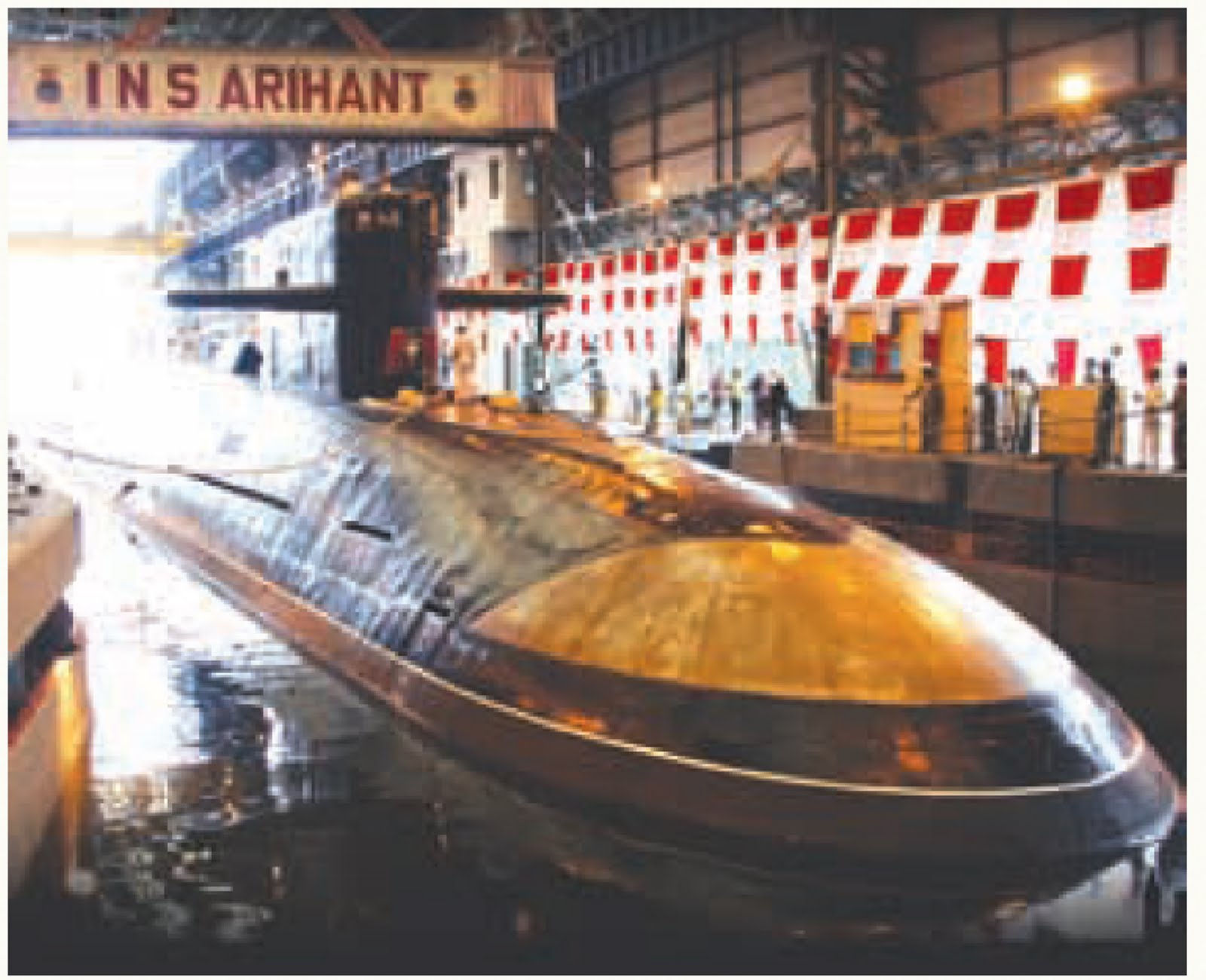|
Stating this, Dr Ravi Gupta, spokesman of the Defence Research and Development Organisation (DRDO), told India
Strategic
October 15 “that adequate precautions had been taken to secure Arihant and other critical assets off Vishakhapatnam and
elsewhere on India’s eastern seaboard well before the Hudhud cyclone’s landfall on October 12.”
Arihant has been in final preparations for sea trials, but its actual position is not known. Most countries, including
the United States, do not disclose the locations or state of deployment of their nuclear submarines as a policy for
deterrence.

The nuclear-propelled-and-nuclear-armed INS Arihant will be a frontline vessel of the Indian Navy when it is
commissioned but as a strategic asset with nuclear strike capability, its position will always be somewhere underwater
on either side of India in the Indian Ocean.
India plans to have a few submarines of INS Arihant class, and two or three more are reportedly under construction already.
At present, the Indian Navy’s only nuclear submarine is INS Chakra, leased from Russia. It is nuclear powered but not nuclear armed.
Hudhud, named in Arabic after the common Hoopoe bird, was initially estimated to be a super cyclone but fortunately
weakened just before landfall. It originated on October 6 in the Andaman Sea and reached a top speed of 175 kmph.
Nonetheless, it caused widespread damage but thanks to disaster management drills by the Navy, Coast Guard, Army, Air Force and civil
administration, the loss of lives and property was limited to the minimum possible.
|